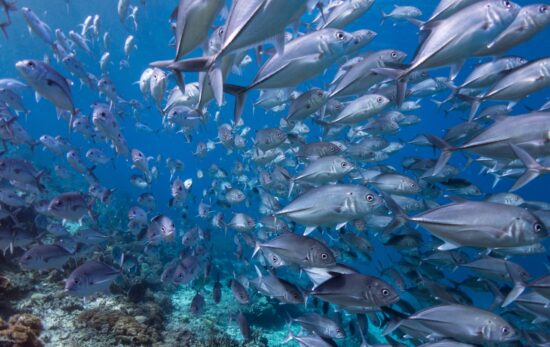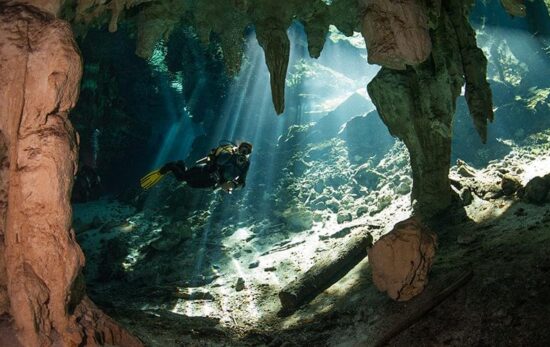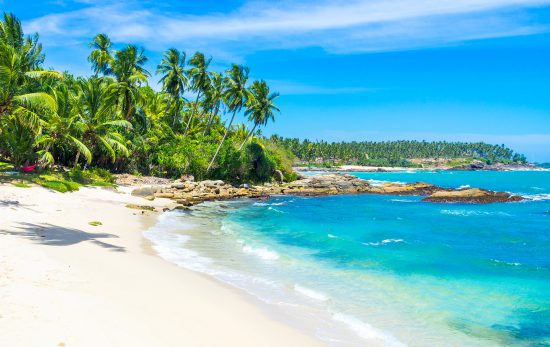The blue whale (Balaenoptera musculus) is the largest animal to have ever existed on planet Earth — even surpassing the biggest known dinosaurs. Given this, it’s easy to see why the chance to go blue whale watching or swimming with blue whales is so appealing — and something that should be on every bucket list.
Blue whales are remarkable animals. They are present in all of the world’s oceans. And while their enormous, potentially 100+ feet (30+ meter) size may seem intimidating, these gentle giants are not dangerous to humans and don’t actually possess any teeth. In place of teeth, blue whales have baleen. Baleen is a comb-like structure which can filter vast quantities of water in seconds. As water passes through baleen, small shrimp, called krill, are retained and then ingested. This tiny crustacean, which is part of the zooplankton group, is the major food source for blue whales.
So you know what blue whales eat and how big they get. You can also answer the question, “Where are blue whales found?” — now it’s time to see one with your own eyes! Below you’ll find the best places for blue whale watching and destinations where swimming with blue whales is also possible.
The Best Places for Blue Whale Watching
These are some of the world’s best places to watch blue whales in their natural habitat. Please note we’ve included links to the local PADI dive centers as they may run whale watching trips or have affiliations with companies that do. Here are our top places to head out into the blue ocean to whale watch.
Saguenay – St. Lawrence Marine Park, Québec
This wonderful marine park in Canada is home to 1600 marine species, among which are 13 types of whale. These include blue whales, humpback whales and a resident population of belugas. Expert guides from the local area will introduce you to the world of marine biology and cetaceans while accompanying you to see the marine animals that live and feed in this uncontaminated park.
Best Time: June to September
Reykjavík and Húsavík, Iceland
In Iceland, it is possible to see whales throughout the year. However, from a tourist’s point of view, summer whale watching offers far better weather conditions. During this time, you can see a number of large whales, such as the blue whale, minke whale and others. These whales come to the icy waters of Iceland in search of food.
Best Time: May to August
Pico Island, Azores
The Azores in Portugal is an archipelago of nine islands, all of volcanic origin. Here you can go diving, surfing, kayaking, bird watching, paragliding and, of course, whale watching. Giant whales, like blue whales and sperm whales, as well as pods of dolphins, regularly visit the area. Don’t miss your chance to see blue whales during their annual migrations.
Best Time: February to March
Monterey Bay, California
Monterey Bay in California is famous for being one of the best places for whale watching. And with more than 2,000 individuals, it’s also one of the best for blue whales. The population of blue whales in California is also the largest and healthiest in the world. These whales are here because of the large concentration of krill, their favorite food. Researchers, who will accompany you on whale watching excursions, can identify each whale by taking a picture of one of its sides and the dorsal fin. In November, these individuals begin their migration to Baja California.
Best Time: July to October
Baja California Sur, Mexico
The Sea of Cortez is one of the most beautiful seas in the world. It’s known as the “Aquarium of Mexico” because of the large biodiversity found within its confines. Between December and April, whales gather here to give birth and breed. Local guides will accompany you on small boats to often travel only a few hundred meters from the coast, where you will be joined by many whales. This is truly an unforgettable whale tour.
Best Time: January to March
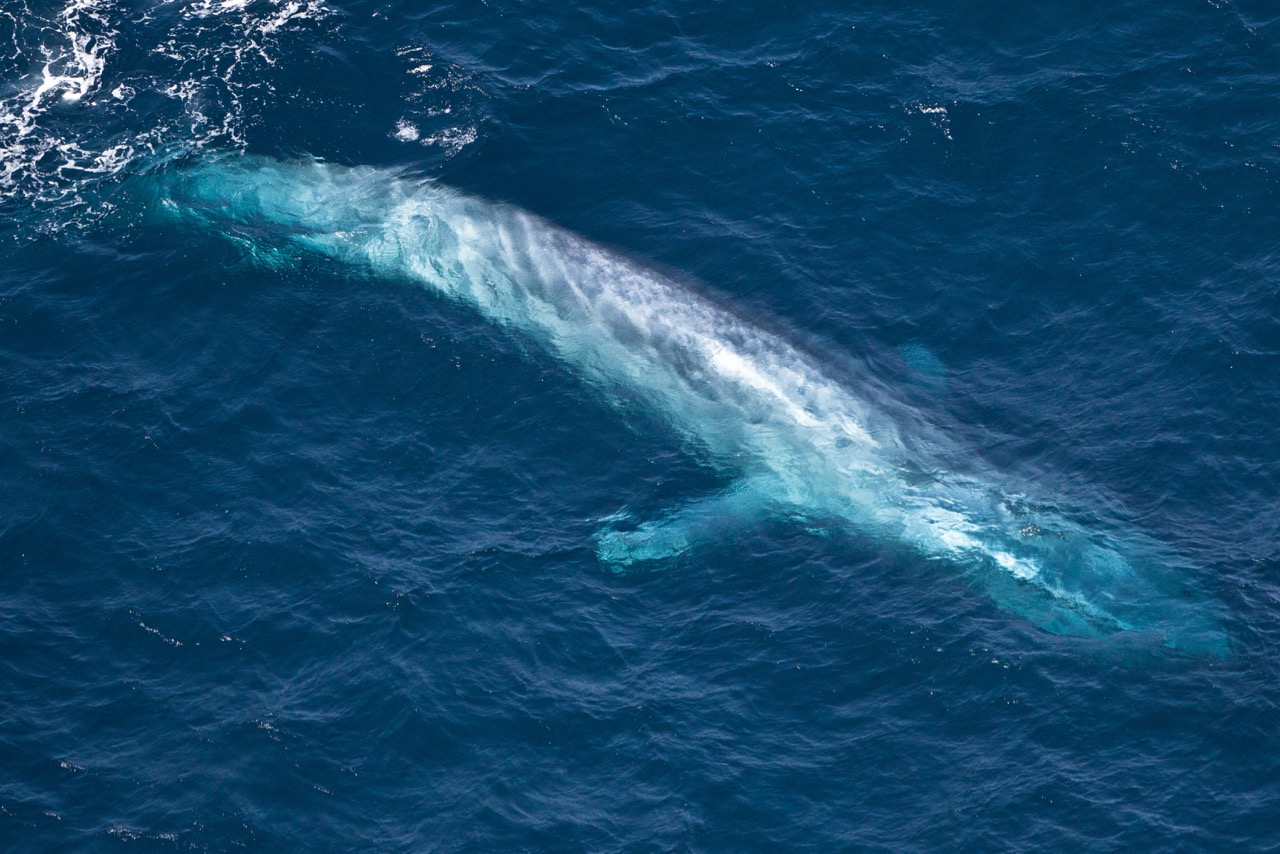
The Best Places for Swimming With Blue Whales
While seeing blue whales from the surface of the water is relatively easy and achievable, getting in the water with these giants of the ocean can be a little more difficult. Here are the best places to swim with blue whales.
Mirissa, Sri Lanka
Sri Lanka is one of the very few places in the world where, besides being able to go blue whale watching, swimming with blue whales is possible. Imagine getting into the water with the largest animal that has ever existed! It is very important to rely on experienced and competent guides and have the correct permits to enjoy this once-in-a-lifetime meeting. If you do get in the water with a whale, be sure to maintain a respectful distance.
An alternative activity worth considering when searching for how and where to see blue whales is whale spotting from a small airplane out of Mirissa or Colombo. This is a fun and unique experience that can offer fantastic views of a blue whale from above or let you see the comparative size of a blue whale next to a human or a boat — a view you’re not likely to forget anytime soon.
Best Time: March to April
Timor-Leste
At the right time of year, the waters off the coast of Timor-Leste become a hotbed of activity with migrating pygmy blue whales. After birthing and mating during the winter months, these whales pass by this island nation on their way back to feeding grounds in the coastal waters of southwest Australia. With the help of local guides, you can spend an extended period in search of the biggest animal in the world. In addition to blue whales, this trip can throw up other marine mammals, including sperm whales, pilot whales, dolphins, whale sharks, orcas and dugongs.
Best Time: October to November
Code of Conduct
We always recommend following the code of conduct while enjoying blue whale watching and other marine mammal encounters. It’s the best way to respect these gentle giants. We also suggest verifying the company providing your whale tour is registered and has the right permits to do so. Furthermore, it’s best to use eco-friendly companies. These checks will ensure you have the best possible experience while knowing that the whales and environment remain protected and respected.
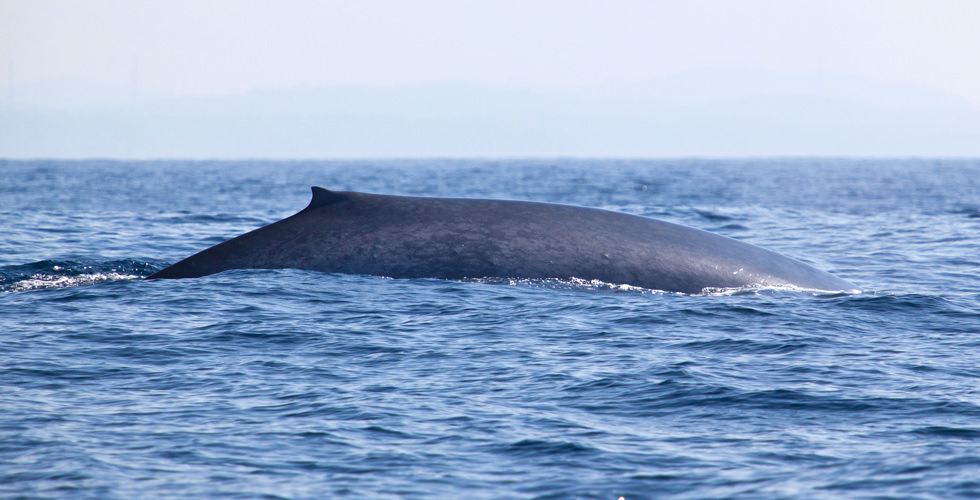
Blue Whale FAQs
From how big they get to how fast they travel, here are some of the most interesting and commonly asked questions about the world’s largest animal.
How Big Is a Blue Whale?
The largest blue whales can be up to 110 feet (34 meters) long. That’s the equivalent of three school buses! On average, female blue whales are bigger than male blue whales.
How Much Do Blue Whales Weigh?
Blue whales reach a maximum weight of around 200 tons (180,000 kilograms). Interestingly, a blue whale’s tongue alone can weigh as much as an adult elephant!
How Long Is the Gestation Period of Blue Whales?
A reproductively mature female blue whale may give birth to a calf about every 3 years. The gestation period of a blue whale is around 12 months.
How Long Is the Lactation Period of Blue Whales?
The maternal milk of a blue whale is very nutritious and fatty. A calf can grow up to 240 pounds (110 kilograms) per day for the first year of its life!
How Much Does a Baby Blue Whale Weigh at Birth?
A newborn blue whale can be between 23 to 26 feet (7 to 8 meters) long and weigh almost 3 tons (2,700 kilograms).
How Long Do Blue Whales Live?
While comparatively little is known about the life history of blue whales, most estimates suggest these long-lived animals have lifespans between 80 and 90 years.
Do Blue Whales Migrate?
Just like a number of other whale species, blue whales are known to seasonally migrate between breeding grounds and feeding grounds.
However, it has been suggested that blue whale migration is not undertaken by all whales. Some blue whale populations may remain in the same place throughout the whole year.
Do Blue Whales Live Alone?
Blue whales are usually encountered alone or in pairs. However, larger groups of these often solitary animals can be observed from time to time, most commonly during breeding or foraging periods of activity.
What Does a Blue Whale Eat?
Blue whales feed on zooplankton (especially krill). It’s believed that the biggest blue whales can consume up to 5 tons (4,500 kilograms) of krill every day.
How Often Do Blue Whales Need to Eat?
During their fat accumulation season, blue whales eat as often as possible. This constant eating and resulting fat is what enables these big whales to face long migrations through food-scarce waters.
How Many Blue Whales Are Left in the World Today?
It’s difficult to know the precise number of individuals alive, but it is thought to be between 10,000 and 25,000. Of these, around 2,800 can be found along the coast of California, which is the largest known population in the world.
Are Blue Whales Dangerous?
Despite their impressive size, blue whales are not dangerous to humans. Blue whales are not aggressive and have no teeth, instead possessing plankton-filtering baleen.
The biggest safety consideration when traveling through waters where blue whales are present is vessel strikes. However, any collision is more likely to result in harm (and possibly death) to the whale.
Are Blue Whales an Endangered Species?
Blue whales are classified by the IUCN as “EN” (Endangered). Recent population estimates put the number of mature blue whales between 5000 and 15,000 individuals worldwide. The good news is that, on the whole, blue whale populations are currently increasing.
How Fast Can Blue Whales Swim?
A blue whale’s average cruising speed is around 5 mph (8 kph). However, if agitated or threatened, blue whales can reach speeds in excess of 20 mph (32 kph).
What Sounds Do Blue Whales Produce?
As the largest animal to ever live on the earth, it seems fitting that this mammoth mammal emits one of the loudest animal sounds ever recorded. You can listen to a blue whale’s song here.
Where Do Blue Whales Live?
Blue whales are a cosmopolitan animal species and are therefore present in all of the world’s oceans. Want to know where you can find blue whales? If you’re interested in seeing exactly where blue whales can be found, check out this distribution map.
Feeling inspired to watch or get in the water with some of the world’s biggest marine megafauna? Then be sure to check out all of the opportunities available to you. In addition to blue whales, it’s possible to encounter other whale species, such as gray, humpback, sperm and minke whales.
Credit
This article was originally written by Mario Passoni, a marine biologist involved in several projects concerning ocean conservation and education. Special thanks to Wayne Sentman from the Oceanic Society as well as Thalia Martinez.
